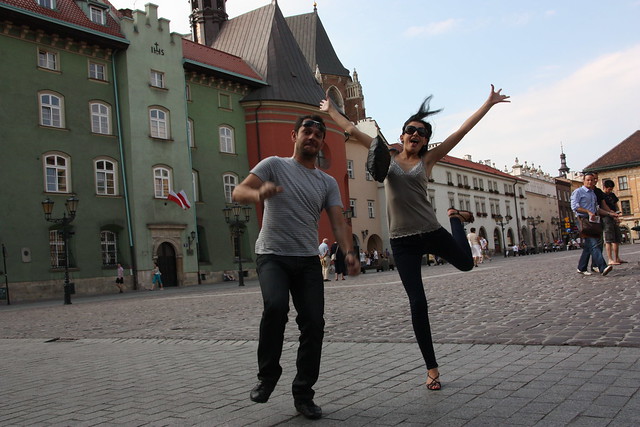

Αν θέλει κάποιος να δει τον γνωστό πίνακα του Λεονάρντο Ντα Βίντσι, "Η κυρία με την Ερμίνα" (φωτογραφία από την Wikipedia), θα πρέπει να πάει μέχρι το Muzeum Czartoryskich (Μουσείο Τσαρτόρισκι) της Κρακοβίας στην Πολωνία...

Ο πίνακας, ο οποίος φιλοτεχνήθηκε γύρω στο 1489-1490, παριστάνει την Cecilia Gallerani, μία από τις ερωμένες του Ludovico Sforza, Δούκα του Μιλάνου, ο οποίος ήταν γνωστός και ως Lodovico il Moro (Λουδοβίκος ο Μαύρος). Ο Λουδοβίκος ήταν ο προστάτης του Λεονάρντο ντα Βίτσι. Ο λόγος για το παρατσούκλι "Μαύρος" ήταν, πιθανότατα, η πλούσια μαύρη κόμη του, αν και υπάρχουν και άλλες θεωρίες...
Η Σεσίλια κρατάει στον πίνακα μία ερμίνα... Και για αυτό υπάρχουν πάλι δύο θεωρίες. Η μία - και πιο πιθανή - είναι επειδή ο Λουδοβίκος άνηκε παλαιότερα στην "Τάξη της Ερμίνας" του Ιωάννης Ε' της Βρεττάνης του "Κατακτητή". Ο Λουδοβίκος αργότερα χρησιμοποίησε την ερμίνα στο οικόσημο του... Άλλη θέλει να συμβολίζει την αγνότητα (!) της Σεσίλια, καθώς η ερμίνα "θα προτιμούσε να αντιμετωπίσει τον θάνατο παρά να ζητήσει καταφύγιο σε ένα λασπωμένο μέρος".

Στην Κρακοβία, στην πλατεία της Św. Marii Magdaleny (Αγίας Μαρίας Μαγδαληνής), έχει στηθεί, για τον Σεπτέμβριο, μια μοντέρνα "διασκευή" του έργου του Λεονάρντο. Είναι δημιούργημα του Ottmar Hörl, ο οποίος είναι Γερμανος, καθηγητής στην Ακαδημία Καλών Τεχνών της Νυρεμβέργης.

Το έργο αποτελείται από 200 ερμίνες (αν και από τις πρώτες μέρες εκλάπησαν μερικές), οι οποίες έχουν περίπου την στάση της Ερμίνας στο αυθεντικό πορτραίτο.
[ENG] If one wants to see the well-known list of Leonardo Da Vinci, "The Lady with the Ermine" (photo from Wikipedia), has to go to the Muzeum Czartoryskich in Cracow, Poland... It was painted around 1489-1490. The subject of the painting is identified as Cecilia Gallerani, one of the mistresses of Ludovico Sforza, Duke of Milan, who was also known as Lodovico il Moro (Louis the "black"). Louis was the patron of Leonardo da Vitsi. The reason for the nickname "Black" was probably because of his rich black hair, although there are also other theories about that... In the painting, Cecilia holds an ermine... Again there are two theories about that. The first - and most likely - is because Louis belonged to the "Order of the Ermine" of John V, Duke of Brittany, known as the "Conqueror". Louis later used the ermine in his coat of arms... Another theory says that the use of the ermine wants to symbolize the purity (!) of Cecilia, as the ermine "would rather let itself be captured by hunters than take refuge in a dirty lair, in order not to stain its purity". In Cracow, at the square of Św. Marii Magdaleny (St. Mary Magdalene), a modern "version" of the work of Leonardo has been set up for this September. It is a creation of Ottmar Hörl, a German professor at the Academy of Fine Arts of Nuremberg. The project consists of 200 martens.













